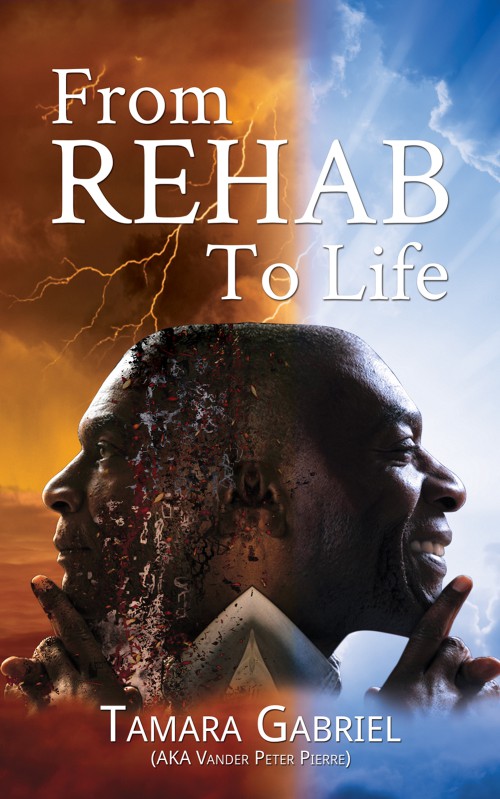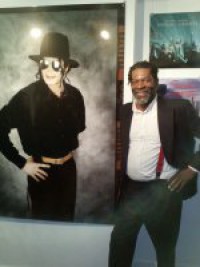
By: Tamara Gabriel (AKA Vander Peter Pierre)
*Available directly from our distributors, click the Available On tab below

If I could concentrate on a book - besides the bible - it means that it was so compelling and so beautifully written that I couldn’t put it down. Besides that I knew yo and Susanne well over 40 years ago and with awareness of all that I have been through as well in the same time it became so very personal - yet our paths were very different.
It is a celebration that the good LORD has taken us through to new spiritual enlightenments.
I am so pleased for yo dearest Vander. I would Lov for yo to continue writing as yo are truly gifted. Yo have such a gentleness about yo. I cried when yo were hugging the tree and crying out to the LORD in despair.
GOD bless yo and strengthen yo on HIS path only.
That this is an important book deserving of a wide readership is undeniable. In a self-important ‘me too’ age where virtue signalling show-business celebrities, television interviewers and overpaid sporting professionals bang on about feeling our pain ‘From Rehab To Life’ provides a timely corrective. For too long these media narcissists have occupied centre stage talking about their ‘journey’ when very few have been on one.
Wordsworth’s ‘Michael’, published in 1800, showed a man broken when his only son Luke, the proverbial innocent abroad, fell prey to live in ‘the dissolute city’ and some seventy-four years later Scots poet James Thomson compounded the horror with his vision of London in ‘The City of Dreadful Night’.
Empathy and research writ large, no doubt, but it took American writer Jack London to literally go the extra mile. Dressed as a vagrant, he lived at the heart of empire, scavenging in London’s East End. The first fruit, ‘People of The Abyss,’ was published in 1903 and proved very influential. Only three decades elapsed before Britain’s George Orwell tried his hand using similar tactics to fashion ‘Down and Out in Paris & London’.
Even these political visionaries could be accused of voyeurism because their journey was an expedition into someone else’s world and something they could bring to an end when it got uncomfortable. Not so with Tamara Gabriel. His journey through London’s underworld and all points beyond may have involved a catalogue of wrong choices but it was also a spiritual journey as he fought to understand forces beyond his control, forces which had shaped him with a purpose which remained elusive.
Thus far his story is universal in its relevance but the elephant in the room – am I allowed to use that phrase in our lacerated, troubled times? – is the ongoing weight of four hundred years of dislocation, alienation, exile and anger. Again Tamara Gabriel has interesting travelling companions. African American anthropologist Zora Neale Hurston wrote ‘How It Feels To Be Coloured Me’ in 1928, insisting “I am not tragically coloured. I do not belong to the sobbing school of negrohood.” It was a radical assertion and, given the current obsession with victimhood, still misunderstood.
Equally forceful was Franz Fanon, a political polemicist from Fort De France, Martinique, who stoked revolutionary fires with ‘Black Skin, White Masks’ in 1952. Seven years later Jewish American radical Norman Mailer defined black America’s existential angst in his essay ‘The White Negro’. When Eldridge Cleaver’s ‘Soul On Ice’ was published in 1968 you could say everything had come to fruition. Ostensibly a prison memoir but in reality a philosophical disquisition on what it meant to be black in America it was a game-changer. And if you’re reading this right now with recent events in Minneapolis, Minnesota, in mind you’re probably saying “So what happened?”
Companions on a journey. The artists I have cited imagined, identified and analysed aspects of the human condition. Tamara Gabriel has lived to the full and striven to put things down exactly as they happened. In the process biography, novel and meditation have become one.
His purpose, as doubtless he will explain, has been to help others by sharing. At the outset, I lambasted poseurs on their so-called journey. This book is the real deal, the ultimate redemption song.
And if some of my allusions, my tone, set the cat among the pigeons, so be it. People are endlessly wittering about ‘the conversation’ so let’s have one.
We use cookies on this site to enhance your user experience and for marketing purposes.
By clicking any link on this page you are giving your consent for us to set cookies